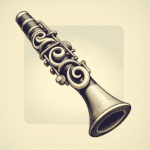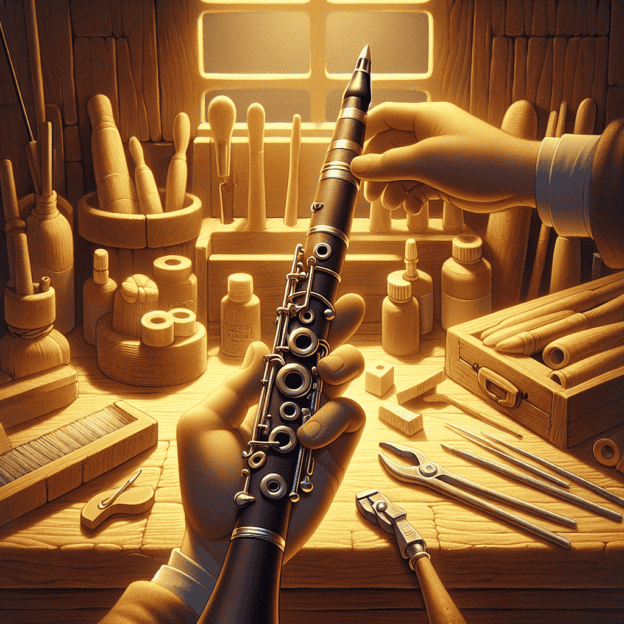The clarinet mouthpiece may be tiny, but its impact on your instrument's sound is enormous. When discussing clarinet mouthpiece facing consistency, we're exploring an issue that can significantly alter how you play and how you sound. If you've ever felt frustrated with your tone's stability or struggled with control, don't worry—you're not alone! Many players don't realize just how much this one part of the clarinet affects their music.
At its core, the term ‘facing' refers to the curve of the mouthpiece where the reed meets it. This design element directly influences how air flows through the mouthpiece and reed's vibrations, shaping your sound. Understanding and addressing mouthpiece consistency helps players achieve smoother playing experiences. And by the way, brands like Martin Freres Clarinets prioritize quality and precision here, as they know this is something musicians can feel immediately.
Why Does Mouthpiece Facing Consistency Matter?
The mouthpiece acts like the clarinet's ‘voice box.' When its facing isn't uniform, air resistance changes, affecting tone color, tuning, projection, and even your physical comfort while playing. If the facing curve is too flat, notes may lack vibrancy or feel dull. If too steep or irregular, you might encounter unintentional squeaks or fatigue. Players at every level—beginners to pros—can notice these effects.
| Facing Issue | Effect on Sound | Player Experience |
|---|---|---|
| Too Flat | Dull, lacking vibrancy | Difficulty in expression |
| Too Steep | Squeaks, inconsistent tone | Fatigue, lack of control |
| Irregular | Unpredictable response | Frustration, inconsistent play |
How Can You Spot Inconsistencies?
You don't need a magnifying glass to figure out something's off with your mouthpiece, but a trained eye sure helps! Some signs include changing tonal clarity between registers, reeds that behave differently than expected, and becoming unusually breathy or overly stuffy. Try this: set reeds that you know and trust on your mouthpiece. Trouble producing the same response you usually get? That could point to facing differences or wear and tear on the mouthpiece itself.
If you've recently switched from another brand to a Martin Freres or similar premium mouthpiece, you probably experienced firsthand how better consistency feels clearer and more reliable. Modern production techniques used by leading brands help minimize variability, making those initial troubles far less common.
Maintaining Your Mouthpiece Consistency
No one wants to be stranded mid-rehearsal searching for a better sound! Keeping your mouthpiece consistent starts with proper care:
- Regular Cleaning: Residue buildup—even invisible deposits—alters the facing curve microscopically over time. After each practice, wash your mouthpiece with lukewarm water and mild detergent.
- Routine Checks: Subtle chips or warped curves can occur during accidents or regular wear. Check your equipment periodically.
- Storage Practices: Use a padded case for travel. Tossing your mouthpiece into a pocket or bag unprotected? That's a big mistake!
Consider investing in tools like a feeler gauge if you're technically inclined. These tools measure exact facing lengths and ensure reeds remain aligned along their intended paths.
Does Player Technique Influence Consistency?
Absolutely! Before you blame only your mouthpiece, re-examine how you interact with it. Excessive biting pressure while playing (hello, overenthusiastic embouchures!) can unintentionally alter the reed-platform relationship, gradually affecting performance. Understanding embouchure form avoids unnecessary stress on your whole mouthpiece setup.
Breath support also works with facing design. If your airstream isn't controlled (too weak or uneven), even a perfect mouthpiece design could produce unsteady responses. Use focused, controlled bursts to make full use of your mouthpiece's precision design.
When Should You Replace or Reface a Mouthpiece?
Mouthpieces, like car tires, wear down. It's just part of playing the clarinet! If your trusty go-to starts underperforming despite diligent maintenance, it might be time for an upgrade or professional adjustment. Specialist technicians can evaluate equipment and suggest repairs like refacing—precision-level alterations made to get optimal reed-to-curve response again.
That said, avoid cheap DIY videos! Amateur adjustments often worsen the problem and damage manufacturing precision permanently. Replacing old or worn-out gear ensures reliability and lets you embrace modern craftsmanship. A high-end option such as a Martin Freres product offers consistency players appreciate.
Final Thoughts for Better Playing Days
While mouthpiece consistency issues might seem overwhelming at first, they rarely persist once you understand what's happening. By combining smart gear rotation, regular habit checks, and understanding how design updates change over time, even difficult consistency challenges become manageable.
And, whether it's subtle manufacturing improvements from trusted brands or refining personal skill sets, strong facing consistency helps your clarinet reach its full potential. After all, an instrument shares its magic only when it speaks fluently without obstacles!







